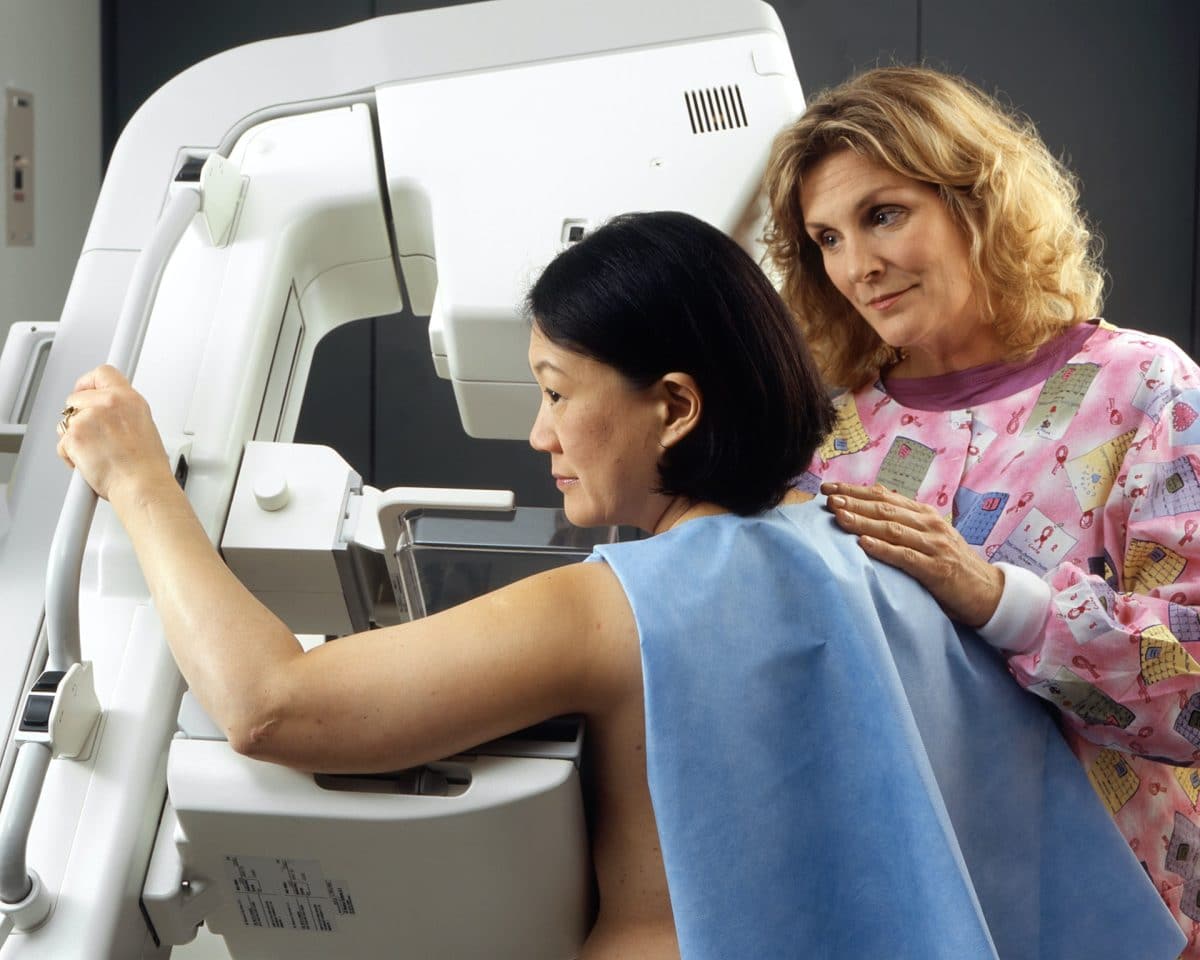Breast cancer is the second leading cause of death in women between the ages of 15-54. Unfortunately, with delayed diagnosis comes a higher rate of mortality. It is important that women are aware of their bodies and know what to look for at an early stage. So, here is how you can do that.

1. Get a good look
The best time to perform your self-exam is when you are in the shower. Part of this is because you are already naked, but also it’s because your skin will be smoother (less friction) and the soap will help you feel any abnormalities that may not otherwise be noticed. Now, take off your shirt and bra (if applicable). If you cannot do this, then wrap a towel around yourself to act as a temporary barrier between the self-exam area and clothing. Now put your hand behind your head and use the other hand to gently pull down on each breast one at a time, starting with the outside arm the furthest away from the side that is being lifted for examination. Examine all areas of both breasts using a clock-face pattern, starting with the nipple. First, check the outer section of both breasts, then move towards the inner part until you get to 6 o’clock—right where your breast meets your chest wall. This is an important area to focus on because about 1 in 5 cancers begins here.
After that, examine the underneath side of both breasts, then move to the nipple itself. Now spin around so that your back is facing the mirror and do a few quick squeezes of each breast while holding your arm against it—this will help you get used to how they feel when touched. Many breast cancer symptoms are subtle, and you may not notice them at first. Take note of anything that feels abnormal or that might even be slightly tender (pain can often be a symptom of early breast cancer, so don’t brush it off).
2. Do BSE every month
Once you have familiarized yourself with how your breasts feel when touched and examined each one individually in the shower or another setting, do a monthly BSE to look for any changes over time. Be sure to start this process at least a week after your period, since women typically notice changes during menstruation that might not be very important. The basic idea is the same as before, but instead of examining each breast one at a time, put both hands behind your head and feel both breasts simultaneously. Examine the entire area of the breast with firm squeezes—lifting, swirling, and gently pressing all around (and underneath) until you’ve done a full circle. Here’s another tip: if you find an abnormality, mark it on your calendar for next month, so you can examine it again and keep track of any changes over time. Try to be less stressed and avoid distractions during this time because you will need to focus on finding anything that might seem suspect. If you’re worried about something you notice, be sure to make an appointment with your OBGYN.
3. You can follow a YouTube video to help you
Once you have familiarized yourself with how your breasts feel and the process of performing a breast self-exam, it can be helpful to watch a video like this. This is also a great way to explain what you’re doing (and why) to someone else—such as your daughter or best friend. Breast cancer is important for women to keep track of because early diagnosis leads to higher survival rates—so if you perform regular examinations and look out for any changes in texture, shape, size, color, spots, lumps, or discomfort then you will be able to catch cancer right at its earliest stage. This will enable you to get the help that you need before things become serious. Everyone makes mistakes once in a while, even doctors! That’s why it’s significant to schedule annual check-ups and not rely on monthly BSEs or YouTube videos alone. When breast cancer is discovered early, it can be treated more easily—but only if you go to the doctor right away. It isn’t pleasant, but it never hurts to double-check yourself by getting a professional opinion when in doubt about what you’re seeing or feeling.
4. Ask your doctor for more tips and advice
If you’re not sure how often to perform breast self-exams or what you should be looking out for, get in touch with your OBGYN or family doctor. They’ll have helpful tips and tricks to get you started, and may even give you a refresher course from time to time so that it doesn’t become routine. Plus, MSK doctors have the expertise and experience necessary to examine your breasts thoroughly if any abnormalities are detected. What’s more—if they find anything unusual during a mammogram, ultrasound, MRI, or other imaging tests, then they will refer you right away to our breast cancer specialists. So don’t be shy about asking questions—doctors want their patients to understand the importance of performing BSEs to reduce the risk of breast cancer, but they’re also there to help if you have any concerns along the way.
The most important thing is to find the right balance in your life so that you can perform regular breast self-exams—but at the same time, not let BSEs take over your schedule. This can be difficult when combining work, exams, and other responsibilities along with family obligations. However, there’s no reason why you shouldn’t follow these tips. That said, since monthly exams are recommended, it may require some advanced planning on your part (especially if you’re busy). If you feel like 3 months is too long of a break between BSEs then mark the next day of the month on your calendar or set an alarm on your phone, so it prompts you to do this task. You could also ask friends or family members to remind you as well.

Self-examination is essential for the early detection of breast cancer and can help save lives. If you feel like something might be wrong, don’t ignore it—take action! It’s better to know what’s wrong and deal with it now than to live in ignorance and regret it later. The only way we’re going to reduce the rates of this terrible disease is if we actually do something constructive.
- About the Author
- Latest Posts
Whether she is researching the latest trends in home decor, life-changing destination getaways, or the best way to maintain your finances, Dewey takes pride in leaving no stone unturned. She is passionate about distilling and delivering high-quality information that you can use to upgrade your life.

